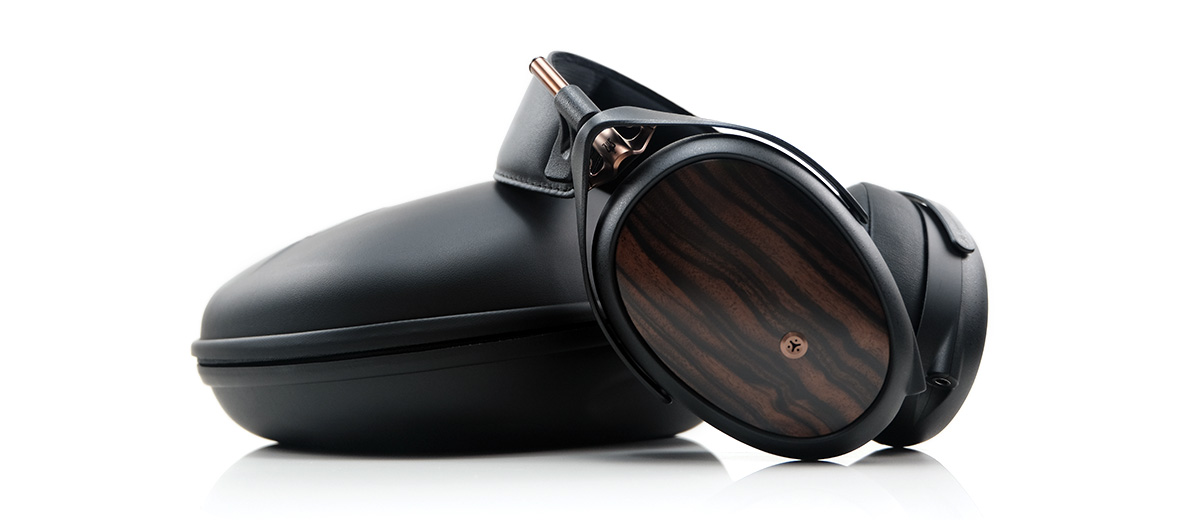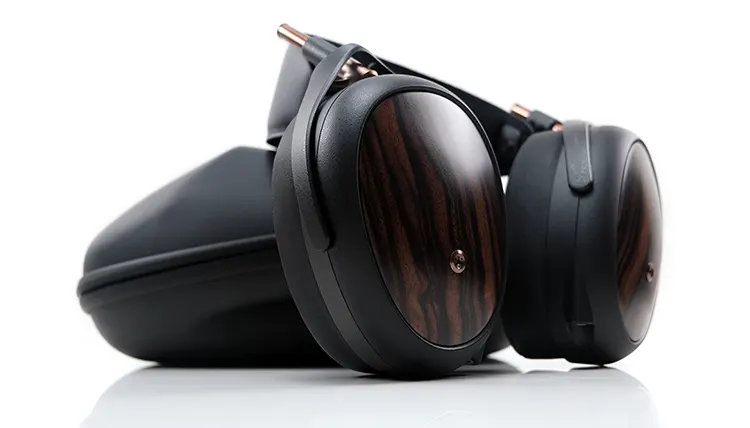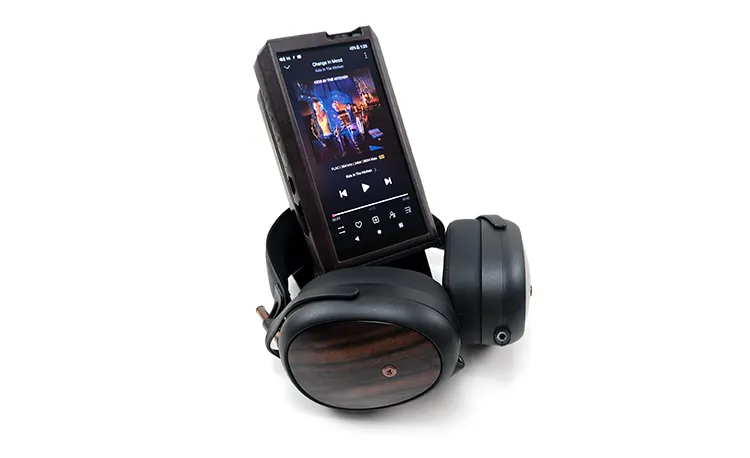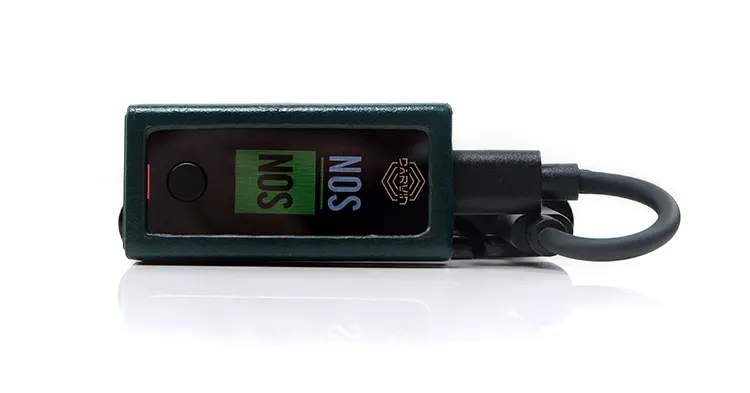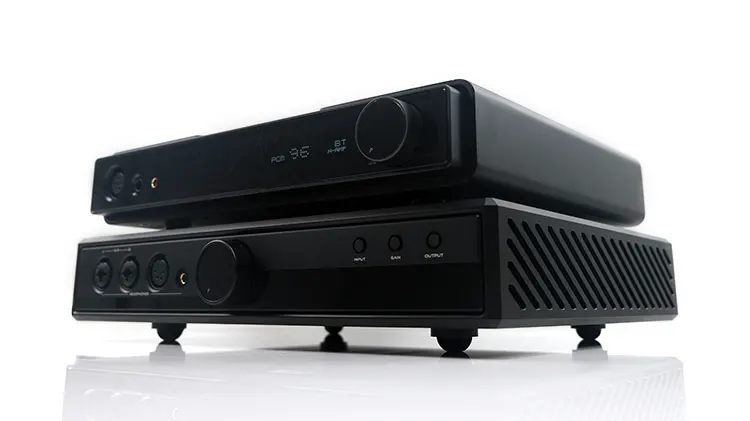Sound Impressions
The following sound impressions of the Meze Audio Liric II were completed using a mix of the HIFIMAN Prelude headphone amplifier and the Serenade DAC.
Summary
The Liric II sounds significantly different from the original. You can read more about that comparison on page 3 of this review but the high-level is of a warmer, smoother sound signature with a relaxed midrange and some sparkle in the upper treble.
It also sounds fuller on the lows with more body but a less concentrated punch which was a signature of the original.
The perception here might seem to be that of a deeper set of lows but the sub-bass is not hugely different. The emphasis is the mid-to-upper bass with an extended shelf up to 300-400Hz.
That brings an injection of warmth into the Liric II mids and, combined with less midrange forwardness, you get a more soothing tone for both vocal and supporting instruments.
If the vocal is central to the recording then the Liric II delivers them in a more coherent sounding less fatiguing compared to the original. I find it ideal for lounge artists such as Laufey and Barabra Weldens whose stripped-down recordings could often sound quite disjointed on the older Liric.
The new tuning is less effective for some EDM recordings. Especially if the bass gets highly energized then light-bodied vocals, particularly around the dipped 1-2k range, might offer less of an ’emotional connection’.
The Liric II also sounds more spacious than the original courtesy of a more neutral midrange imaging presentation. It lags a little behind some of the closed-back competition for sheer staging size but the clarity and imaging have improved considerably.
For the most part, the treble issues of the old have been dealt with. It does sparkle though and you can hear some of that upper treble overtone being picked up on higher-register instrumental timbre. Still, it’s much more refined and less intrusive than the original tuning.
Frequency Response
The Liric II FR shaping sits somewhere closer to a ‘U’ than a ‘V’ with major lifts around 60-100Hz and again around 10K-12k with some minor nudges around 5-6k.
The flattest part of the curve is around 300Hz to 1k where the response curve stays fairly linear and neutral though the extended 100Hz-300hz bass shelf will still bring some warmth and body into the Liric II’s mids.
Despite being relatively neutral this is not an overly recessed midrange. Save for a narrow 1-2k dip the mids retain a nice degree of clarity and good separation. However, if you are coming from the Liric V1, you will notice the more relaxed vocal imaging.
The only time this new midrange tuning struggles is when any recording taps hard on the mid-to-upper bass which can cause a bit of excess bloom to overshadow some vocal recordings, though not always. Ultimately it will depend on the recording’s vocal mix itself.
The 3-5k range starts neutral but picks up a bit of energy ending up slightly north of neutral at the tail-end. You will hear more of a sparkling overtone from the Liric’s stronger upper treble but in truth, I find the resulting coloration to be more of a sheen than a distracting harsh or hard-edged sound.
Timbre
Probably the most notable difference from the original this time is the additional warmth combined with a dense and richer low-end.
There is some bloom, the extended bass shelf doesn’t have the same deep cut as the original from 100-300Hz which only serves to enhance the perception of body and warmth through the mids.
The bass is weightier but perhaps not as punchy as before. However, I do find the lower-register instrumental fundamental and general levels of note body through the lows and lower mids to have improved.
Vocal timbre is another benefactor of the new Liric II tuning. The relaxed 1k region combined with the enhanced warmth produces a vocal tone that sounds much less stressed and shouty than what came before.
You are less likely to find unnatural vocal sibilance from the Liric II performance unless they are very high-pitched or the recording itself has a generally bright production with heavier percussion presence.
The upper treble lift does have an influence but as mentioned I find it more of the ‘sheen’ variety on the general mids and treble coloration rather than just plain sharp and ‘wince-inducing’.
At times this can stray into exhibiting more ethereal qualities but only for very high-pitched synth notes and some light percussion splashes.
Staging & Dynamics
Meze has gone for extension in the highs and presence in the lows and dropped the mids a bit further back.
The resulting changeup creates a more spacious soundstage compared to the original but also one that is, for the most part, a more coherent and holographic presentation than the original Liric.
The older tuning pushed the vocals up front and center with instruments falling a lot further back sounding relatively diminished and lacking in clarity.
That is not the case here. Vocals sit further back from the stage but in most instances, they do not sound recessed or lacking in presence.
The mid-to-upper bass imaging is forward, more so than the sub-bass so it is fulsome and weighty but not quite as deep-reaching as something like Dan Clark Audio’s E3 which stretches the staging a bit more in all directions.
Arguably, the Liric II is a bit more intimate compared to the E3 but I can’t fault the improved imaging and layering over the original’s more skewed qualities.
Synergy
Efficiency & Sensitivity
The Meze Audio Liric II is rated at 61Ω with an SPL of 100 dB (1 mW / 1 kHz). It’s a big jump over the 30Ω of the original Liric though and noticeable when A/B’ing their respective performances from amplifiers such as the Ferrum OOR.
The gap isn’t huge but you will have to move the dial up a little to volume match the Liric II to the Liric when using the OOR’s balanced output in high gain mode.
It is also less sensitive compared to competing closed-back planar headphones such as the Audeze LCD-XC 2021. With the same OOR setup, I found the LCD-XC 2021 to volume match a good deal lower when compared to the Liric II.
It is, however, more sensitive and easier to drive in general compared to one of its closest closed-back planar competitions, the -90 dB/mW rated Dan Clark Audio E3.
The Liric II did quite well in my testing with portable devices and I include dongles in that statement. It will sound optimal with better-quality desktop amplifiers but going portable is very much doable.
My general default was the 4.4mm balanced cable just to ensure the Liric II received the maximum voltage and power from any connected device.
However, in some instances, such as the HiBy FC6’s 3.5mm SE output, it sounded quite lively so by no means would I say used a balanced connection exclusively with the Liric II.
Portable Pairings
I tested four DAPs and three dongles with the Liric II. These included the HiBy R8 II, the Cayin N8ii, iBasso’s DX320 MAX Ti, and the FiiO M17. For the dongles, I threw in the Cayin RU7, the LP W2, and HiBy’s FC6.
The Liric II is a smooth dense sounding set of headphones with a relatively laid-back vocal performance. Pairing it with an equally smooth source and amplifier makes it all a bit too soft and laid back for my tastes.
DAPs
In all instances, I much preferred a cleaner solid-state sound with tight and punchy low-end performance with the Liric II over anything overly warmed up or in the case of the N8ii, a tube timbre mode.
The N8ii tube timbre produced a softer set of lows compared to its solid-state Class AB mode on the Liric II, even with its P+ mode which enhances the voltage output. With solid-state the bass impact tightened up considerably producing a slightly cleaner but more dynamic performance.
The FiiO M17, DX320 MAX Ti, and the R8 II sounded more robust on the lows with the R8 II’s Class A mode producing a more authoritative bass response from the Liric than its Class AB mode.
The DX320 MAX Ti’s balanced output combined with the gain stage 4 was the most holographic and dynamic sounding of the source pairings tested.
This is a more neutral-sounding pairing but one that clamps down on the bloom a bit and generally sounds more spacious than the other pairings. It also does better in terms of vocal clarity without producing a harsh response from the Liric II’s upper treble.
Dongles
I have to give this one to the HiBy FC6 but this is purely down to my personal preferences for a slightly forward vocal image which the FC6 seems to excel at. It’s a juicy sound with plenty of heft on the lows and a nice weighted vocal presence that counters it nicely.
You will lose some staging openness with this combo which is where the RU7 comes in with its superior soundstaging capability and improved channel separation via its balanced high-gain output.
It is a more refined offering compared to the FC6 and my pick for mid-tempo lounge and jazz recordings with the Liric II.
My only complaint about this pairing is the very relaxed midrange which works fine for stripped-down tracks with vocals already mixed to the fore but can lose the magic of the FC6 presentation on tracks with high-energy bass performances.
The Luxury & Precision W2 pairing with the Liric in high gain balanced mode is like a compromise between the RU7 and the FC6.
The vocal separation improves as does the punchiness of the bass performance but it’s not quite as weighty or as rich in tone as the FC6/Liric II pairings. It is, however, the better pairing if you want a punchy mid-bass output from the Liric II.
Desktop Pairings
I had a similar experience with the Liric II when matching up to desktop amplifiers with a bias for solid-state over tube variants and clean over warm in most instances.
I tested 5 systems, including the Ferrum OOR with the Cayin N7 pre-out, the HIFIMAN Prelude powered by the Serenade DAC, the complete dCS Lina and Bartok APEX systems, and finally, the HA-300MK2 tube amp from Cayin matched to the Holo Audio Spring DAC 2.
Let’s remove the HA-300MK2 off the table right away. It sounded very strange, almost like an impedance mismatch was chopping off the lows and highs making it a wide but very mid-centric sounding pairing.
It does have impedance selectors but none of them fundamentally changes the dynamics of this pairing so I would advise avoiding this one if you can.
The Ferrum OOR and HIFIMAN Prelude produced better but contrasting sound signatures. The Ferrum is much more neutral sounding compared to the richer tones of the HIFIMAN Prelude. It’s tighter on the decay and maybe a bit more precise but lacks the joyfulness and excellent low-end dynamics of the Prelude/Liric pairing.
The two dCS amplifiers also have a similar contrast with the Bartok the more natural and smoother performer and the Lina the cleaner more precise-sounding pairing. However, the Lina is not the OOR, delivering much better clarity and dynamics making it a very exciting high-energy pairing with the Liric II.
The one caveat is for those sensitive to the Liric II’s upper treble. It will come through stronger on the Lina and the OOR compared to the Bartok and the Prelude pairings.

